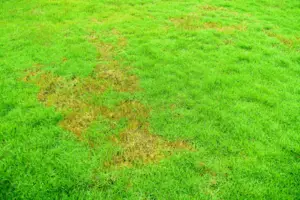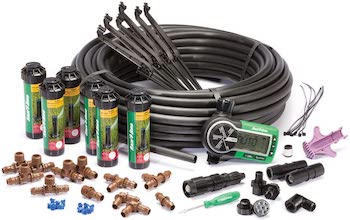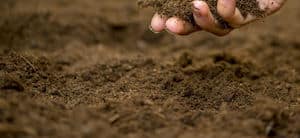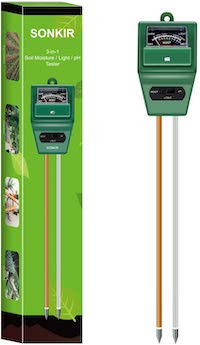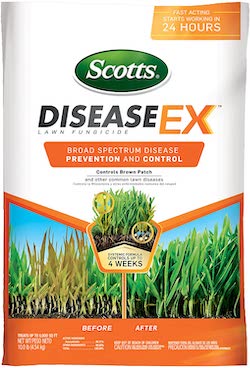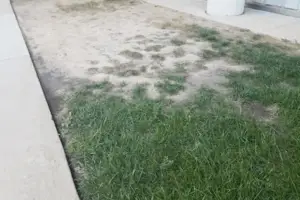What to Do When Your Lawn Isn’t Growing
Nothing makes you feel the pride of being a homeowner more than when you have a beautifully lush and manicured lawn for all your neighbors to see. This makes it all the more frustrating when you do everything you can to make your yard look good, but for whatever reason, you just can’t get the grass in your lawn to grow.
So, why isn’t your lawn growing? There are several reasons why your lawn may not be growing. Here are 6 common culprits that keep lawns from becoming lush and thick:
- Your lawn is heavily shaded and doesn’t get direct sunlight
- The grass isn’t receiving an adequate amount of water
- The soil has not been fertilized correctly
- The soil’s pH is too high
- Your lawn may be infected by lawn fungus
- The lawn has the wrong type of grass for the area
You can provide care for your lawn all year round, even in the winter months, to help your lawn grow well during the Spring and Summer. A good-looking lawn is the result of hard work and dedication to making your property look its best. Keep reading to learn more about why your grass may not be growing and what you can do about it.
Your Lawn Isn’t Growing Because It Doesn’t Have Enough Sunlight
One reason many homeowners struggle when it comes to growing their lawn is that the lawn doesn’t receive enough sunlight. If your yard is heavily shaded by trees, bushes, or other fixtures, then the grass isn’t receiving the sunlight it needs to grow.
Grass fuels its growth by a process called photosynthesis. Sunlight is a key ingredient in this process, and it helps the plant convert carbon dioxide into oxygen. Without sunlight, the process of photosynthesis will be slower and less effective.
Examine the areas of your lawn that aren’t growing; are these areas shaded for the majority of the day? If so, the lack of sunlight may be the culprit. You can trim branches, cut down trees, and move fixtures to ensure that your lawn is getting the sunlight it needs to grow.
If you like shade over your yard to keep things cool in the summer, you may consider planting shade-tolerant grass. Tall fescues, St. Augustine grass, and Ryegrass only need 4 hours of light a day to grow. These grasses don’t need direct sunlight, rather just light filtering through tree branches and leaves.
Your Lawn Isn’t Growing Because It’s Not Receiving an Adequate Amount of Water
Another common reason your lawn may not be growing is that it isn’t receiving adequate amounts of water. During the summer months, the majority of America can go through dry spells where your lawn may not get water for days. It’s important to know exactly how much water your lawn needs to stay healthy and grow lush.
According to Scotts.com, your lawn needs between 1 – 1.5 inches of water a week to maintain its health and growth. If you look in the forecast and see that it’s not supposed to rain for the next seven days, you should take the time to water your lawn using a sprinkler system. a sprinkler system will soak your whole yard and distribute water so that it can be absorbed into the soil. If you’re looking for a good sprinkler system, check out the Rain Bird 32ETI sprinkler system.
![]() Depending on the climate you live in, it’s important to monitor the amount of water your lawn is getting if you want to have a full and luscious lawn. A lawn in Arizona or the Midwest will need much more care and watering compared to a lawn in the Northwest or along the East Coast.
Depending on the climate you live in, it’s important to monitor the amount of water your lawn is getting if you want to have a full and luscious lawn. A lawn in Arizona or the Midwest will need much more care and watering compared to a lawn in the Northwest or along the East Coast.
Your Lawn Isn’t Growing Because the Soil Hasn’t Been Fertilized Correctly
One reason your grass may not be growing is that there aren’t enough nutrients in the soil to sustain good growth. Soil can quickly become drained of nutrients, so it’s important to regularly return nutrients to the soil, which can be done in several ways. The health of your soil plays a critical role in how well your grass is able to grow.
Many homeowners rely on soil fertilizer to put nutrients and minerals in the soil and to help the grass grow. Soil fertilizer should be spread throughout the year to keep your yard healthy and help it prepare for the growing months. Homeowners will start fertilizing regularly in the early spring to help give the soil a boost before the grass starts to grow.
Another way you can return nutrients to the soil is by leaving grass clippings on your lawn. The clippings will decompose and organic matter will return to the soil. People will also spread manure over their lawns to enrich the soil with nutrients. Regardless of your methods, grass needs good soil to grow. If the soil is in bad condition, it will be hard to grow any grass.
Your Lawn Isn’t Growing Because the Soil’s pH is Too High
There is another aspect of your soil that can affect how well it can grow grass; the pH levels of the soil of your yard can affect whether or not the grass is able to grow. pH measures the acidity and the alkalinity of the soil. A lower number represents an acidic level while a higher number represents an alkaline level. A 7 on the scale is considered neutral, or balanced, meaning that the acidic levels and alkaline levels balance each other out.
When it comes to growing grass, you’ll want the soil to have a pH level between 6.5 and 7. Most grasses grow well at a neutral pH or a slightly acidic pH. Depending on the certain type of grass you are trying to grow, the soil may need to be even more acidic. Do your research to see what type of environment the grass grows best in.
There are many simple testing kits and contraptions out there that will give you the pH levels of your lawn. Check out the Soil pH Meter for an easy way to gather the levels of your soil. Once you know the levels of your lawn, you can work to balance the levels with certain types of fertilizers and minerals.
Your Lawn Isn’t Growing Because It’s Infected by Lawn Fungus
Have you ever gone out for an early morning run to realize that there are mushrooms in your lawn that weren’t there the day before? They just seemed to appear out of thin air. Mushrooms are just one type of lawn fungi that can wreak havoc on your lawn.
Most lawn fungi take root at night. At this point, the grass is strained from the heat of the day and is finally entering into rest mode for the night. Dew settles in, coating the blades of grass. With your lawn in a resting state and dew moisture creating the perfect environment for fungus to grow, the grass becomes susceptible to fungi attacks.
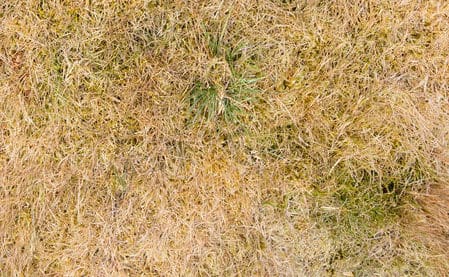
One way to fight off lawn fungus is to make sure that the soil of your lawn is healthy. The soil will provide nutrients to the grass that will make it strong and capable to fight off attacks from fungi. Find ways to drain or irrigate your lawn so there’s no excess moisture. If you have lawn fungus in your yard, read our article Recognizing & Treating Lawn Fungus: What You Need to Know.
 Your Lawn Isn’t Growing Because It’s the Wrong Grass for the Area
Your Lawn Isn’t Growing Because It’s the Wrong Grass for the Area
One reason that largely goes overlooked when it comes to your lawn not growing properly is that your lawn may consist of grass that doesn’t do well in the area you are in. Some grasses do well in more arid environments with little water while others require a lot of care, feeding, and watering. Some grasses can grow incredibly slow, like fine fescue. This type of grass is perfect for those looking for a low maintenance yard.
Research the type of grass you have in your yard and whether or not it is meant to flourish in the climate you’re in. You can also re-plant and re-seed your lawn to better match the environment that you live in. If your lawn is heavily shaded, plant the St. Augustine grass. Aim to plant grass in the late spring or early summer, as conditions are ideal for new grass to grow.
I hope this article helped answer why your lawn isn’t growing. Nothing is more frustrating than putting so much work into your yard to then have grass that won’t grow or a lawn that comes in thin. To learn more, check out our article Why Your Lawn is Thin and How to Fix it.


